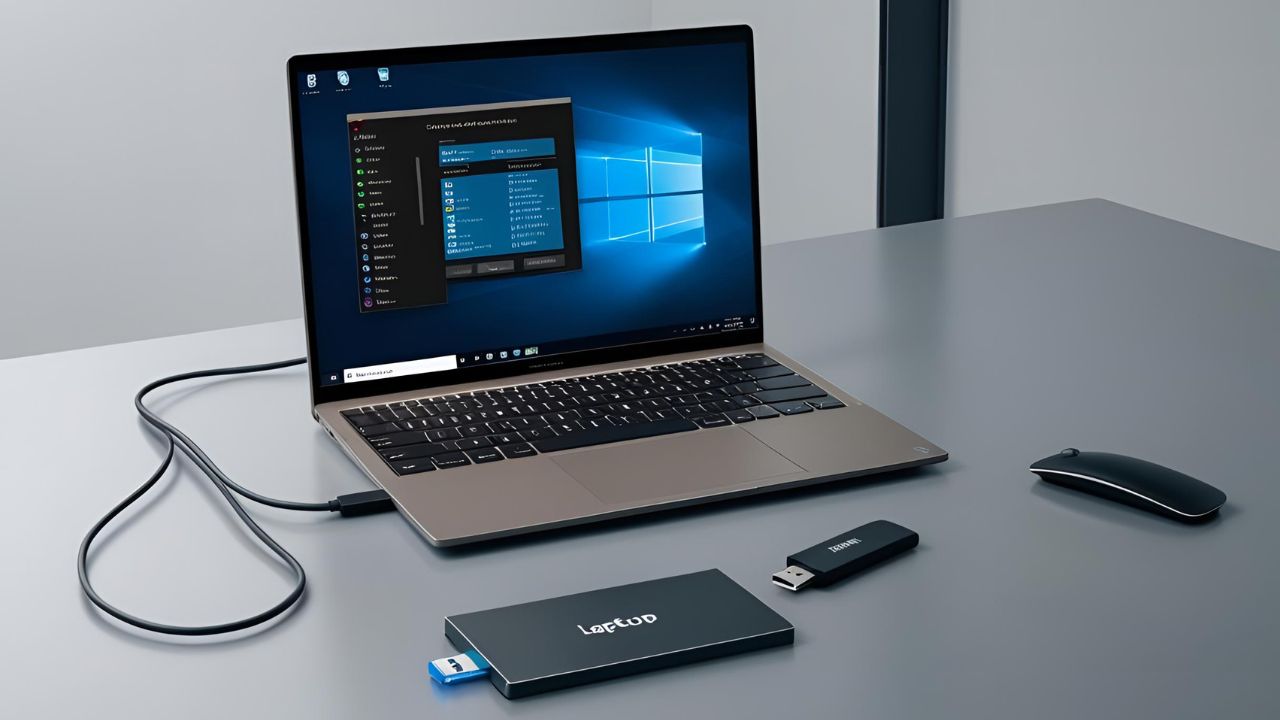How to Boot from USB on HP Laptop
When utilizing system recovery tools, installing a live Linux distribution, or installing a new operating system, boot from USB on HP laptop might be crucial for a number of purposes.
This tutorial will make sure you can easily boot from a USB device by guiding you through each stage of the procedure.
Why Boot from USB?
Operating System Installation: Installing or reinstalling an operating system such as Windows, Linux, or macOS.
System Recovery: Using recovery tools to fix issues or restore your system.
Live Operating Systems: Running a live version of an OS without installing it on your hard drive.
Diagnostic Tools: Running diagnostic software to check and repair hardware issues.
Preparing the USB drive
You must correctly prepare a USB device before you may boot from it:
Get an ISO Image That Is Bootable: For the tool or operating system you wish to use, download the ISO file.
Put a USB flash drive to use: Make sure the USB drive is empty or contains no vital data, and that it has adequate space—at least 8GB is advised.
Creating the Bootable USB drive
To make a USB device that is bootable, there are several tools available. These are the ones that are most often used:

Windows’ Rufus
Get Rufus and install it: Get the most recent version by going to the Rufus website.
Put the USB drive in place: Attach the USB drive to your laptop made by HP.
Launch Rufus: Choose the ISO file that you downloaded along with the USB device.
Initiate the Procedure: To make the USB disk bootable, click Start.
(Windows, macOS, Linux) UNetbootin
Get UNetbootin and install it: Get the most recent version by going to the UNetbootin website.
Put the USB drive in place: Connect your laptop to the USB drive.
Launch UNetbootin: Choose the ISO file that you downloaded along with the USB device.
Create the bootable USB: To begin generating the bootable USB device, click OK.
Etcher (Linux, macOS, and Windows)
Install Etcher after downloading it: Download the most recent version by going to the Etcher website.
Put the USB drive in place: Connect your laptop to the USB drive.
Accessible Etcher: Choose the ISO file that you downloaded along with the USB device.
Flash: To make the USB disk bootable, click Flash.
Changing Boot Order in BIOS
To boot from the USB drive, you need to alter the boot order in the BIOS settings of your HP laptop. Here’s how:

Enter BIOS Setup
Restart Your Laptop: Power on or restart your HP laptop.
Access BIOS: Press the appropriate key (usually F10, Esc, or F2) repeatedly as soon as the HP logo appears.
Navigate BIOS Settings
Use Arrow Keys: Use the arrow keys to navigate the BIOS menu.
Find Boot Options: Look for a tab or menu labeled Boot, Boot Options, or Boot Order.
Change Boot Order:
Select USB Drive: Use the arrow keys to move the USB drive to the top of the boot order list.
Save and Exit: Press F10 to save the changes and exit the BIOS setup.
Using the USB drive to boot up
You may now boot from the USB device after modifying the boot order:
Place the USB drive in: Make sure your HP laptop is linked to the bootable USB drive.
Restart Your Laptop: Give the laptop a restart.
Boot Menu: If the laptop doesn’t automatically boot from the USB, you may need to access the Boot Menu by pressing Esc or F9 during startup and selecting the USB drive.
Troubleshooting Common Issues
If you encounter issues when trying to boot from the USB drive, here are some common troubleshooting steps:

USB Drive Unrecognized
Check Connections: Ensure the USB drive is properly connected.
Try Different Port: Use a different USB port on your laptop.
Invalid Bootable Device
Recreate Bootable USB: Use a different tool to create the bootable USB drive.
Check ISO File: Ensure the ISO file is not corrupted.
BIOS Settings Not Saving
Check Battery: Ensure the CMOS battery is working correctly.
Reset BIOS: Reset BIOS settings to default and try again.
Operating System Installation Issues
Compatibility: Ensure the OS is compatible with your HP laptop.
Disk Format: Check that the target disk is properly formatted.
Additional Tips
Keep Backup: Always backup important data before making changes to your system.
Stay Updated: Ensure your BIOS firmware is up to date for compatibility and stability.
Use Reliable Sources: Download ISO files and tools from official or trusted sources to avoid malware and corruption.
Conclusion:
Once you know the basics, booting an HP laptop from a USB device is a simple process. Making a bootable USB drive and properly configuring your BIOS settings are crucial whether you’re using recovery tools, installing a new operating system, or running live distributions.
You can make sure that your HP laptop boots from USB smoothly and successfully by following this method. To improve your experience, keep in mind to troubleshoot typical problems and use extra advice.
You may now comfortably take on a variety of jobs that call for booting from a USB disk.

